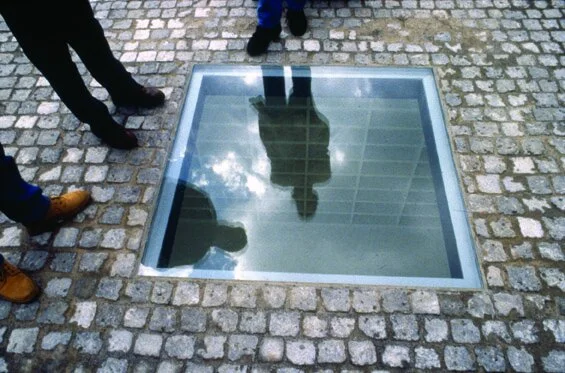Fixation and Repetition - with Littoral
Hamutal Shapira
Micha Ullman is a highly regarded Israeli artist. His sculptures are exhibited around the world, best known for his “Empty Library” (Bebelplatz, Berlin, 1995). (1) Many of his artworks are subterranean involving digging. They are dug in such a way that you can sometimes pass by the sculpture, leaving it unnoticed.
Ullman, being asked about this repetition says: “I’ve been attracted to digging for decades.. It is about the void, that doesn’t let go of me. This emptiness of the hole, the more you deepen it, the more space you get, the more sky. This fascinates me!... and all this, happens on the wall of the hole, the boundary, the ‘in between’. This is a border-line condition”. He continues: “My first diggings were as a child joining my father. He ran away from Berlin in 1933 and arriving in Palestine, wanted to become an agriculturist, “to work the land”. He dug pits in order to turn kurkar (2) into more fertile soil, so things will grow”.(3)
One can say that Ullman’s digging, emptying, hollowing, exposing void - using his body to measure, his hands to dig, taken over with his art, -“… is no longer a question of discovering the advent of a signification, but of reading the letter of the event of jouissance that is repeated in the event of the body”.(4)
But what is this “border – line” he is pointing at?
I want to propose that Ullman’s artistic act touches upon something that has to do with the repetition of inscribing a littoral condition. This ‘coastline’ between territories that separates two domains that have nothing in common, a territory of jouissance, a territory of desire. “Where the real is not in opposition, is not exterior, a littoral is deduced: wholly interior, between the sense, the effect of sense, and the place of jouissance”. (5)
One can think of Ullman’s digging as bringing forth a separation, and this is where, concretely, the void is situated.
“How to articulate the void is what interested Lacan: the correct use of the void, of this Void-median that is a kind of version of the littoral, that which separates two things that between them have no way of holding together, or any way to pass from one to the other”.(6)
It seems that in repeating the condition of littoral, Ullman “knows how”. Where there was rupture, where there was fracture, he manages to transform libido in to a possibility that can hold “what usually doesn’t hold”. Managing with this void, to make exist.
References
(1)”Empty Library” - a sculpture where Ullman dug a large subterranean room which is lined with empty white bookshelves, approximating the volume of the 20,000 books burned on that site on May 10, 1933.
(2) Kurkar is a rock unique to the coastal region of the Levant and can be found along the shores of the Mediterranean, from Turkey to Sinai.
(3) “Making existence from void”, (2022), Conversation with Micha Ullman, by Hamutal Shapira, giepnls.com
(4) Stevens A., In “Fixation and Repetition”, the argument for the NLS Congress 2022. Available at: https://nlscongress2022.amp-nls.org/home-en
(5) Laurent E., The Purloined Letter and the Tao of the Psychoanalyst, The Later Lacan, pp. 41. Véronique Voruz and Bogdan Wolf (eds), New York, Univ. Press, 2007.
(6) ibid. pp. 44.

